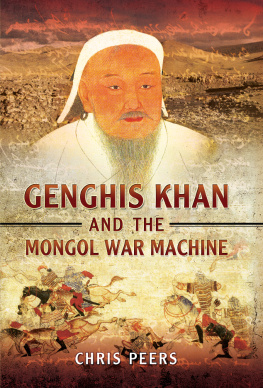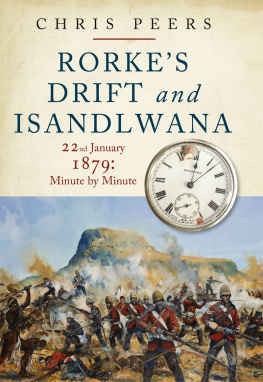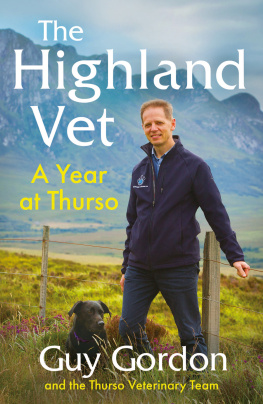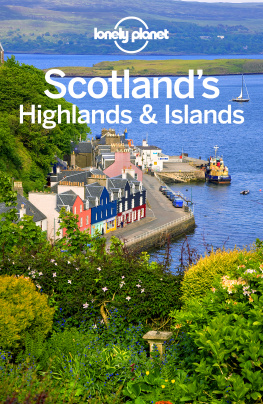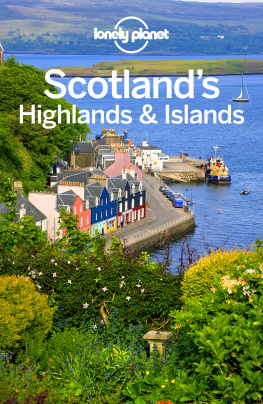Pagebreaks of the print version

The Highland Battles
The Highland Battles
Warfare on Scotlands Northern Frontier in the Early Middle Ages
Chris Peers
First published in Great Britain in 2020 by
Pen & Sword Military
An imprint of
Pen & Sword Books Ltd
Yorkshire Philadelphia
Copyright Chris Peers 2020
ISBN 978 1 52674 174 5
ePUB ISBN 978 1 52674 175 2
Mobi ISBN 978 1 52674 176 9
The right of Chris Peers to be identified as Author of this work has been asserted by him in accordance with the Copyright, Designs and Patents Act 1988.
A CIP catalogue record for this book is available from the British Library.
All rights reserved. No part of this book may be reproduced or transmitted in any form or by any means, electronic or mechanical including photocopying, recording or by any information storage and retrieval system, without permission from the Publisher in writing.
Pen & Sword Books Limited incorporates the imprints of Atlas, Archaeology, Aviation, Discovery, Family History, Fiction, History, Maritime, Military, Military Classics, Politics, Select, Transport, True Crime, Air World, Frontline Publishing, Leo Cooper, Remember When, Seaforth Publishing, The Praetorian Press, Wharncliffe Local History, Wharncliffe Transport, Wharncliffe True Crime and White Owl.
For a complete list of Pen & Sword titles please contact
PEN & SWORD BOOKS LIMITED
47 Church Street, Barnsley, South Yorkshire, S70 2AS, England
E-mail:
Website: www.pen-and-sword.co.uk
Or
PEN AND SWORD BOOKS
1950 Lawrence Rd, Havertown, PA 19083, USA
E-mail:
Website: www.penandswordbooks.com
Acknowledgments
The author would like to thank the following for their assistance:
VisitScotland, and especially the advisors at Bowmore, Inverness and Stornoway.
The very helpful staff at Caithness Horizons, Thurso, and the Visitor Centre at Burghead.

A map of Scotland, based on J.H. Coltons map of 1855, showing the locations of the battlefields featured in this book:
1. Skitten Moor, Caithness, ninth and tenth century ad.
2. Torfness (Burghead), Moray, 1040.
3. Tankerness, Orkney, 1136.
4. Renfrew (Braehead), 1164.
5. Mam Garvia (Strath Garve), Easter Ross, 1187.
6. Clairdon (Thurso), Caithness, 1198.
7. Largs, Ayrshire, 1263.
Introduction
S cotland is a country that is visited by millions every year, attracted by its breathtaking scenery, the tranquillity of its wild places and the hospitality and vibrant culture of its people, but also by its history. At sites like Edinburgh and Stirling castles, and the battlefields at Bannockburn and Culloden, visitors can be entertained and educated with well-designed exhibitions, re-enactments and even computer simulations evoking the great events that have taken place on those very spots. But especially in the north and west of the country, countless other battlefields, and the dramatic stories that they recall, remain almost unknown.
Nevertheless, although there may be no monuments or visitor centres, there has often been no archaeological investigation, and the exact location of the site may not even be evident on the ground, there is still much to be learned from studying the terrain in conjunction with the contemporary written sources describing the events that occurred there. The seven battles and associated campaigns discussed in this book are just a small selection from this great untapped resource. They have been chosen because they help to fill in some of the gaps in popular understanding of Scotlands history, but also because together they tell an important part of the story of mediaeval Scotland. Some of the sites are worth visiting just for their isolation and beauty. At Tankerness, for example, the dominant sounds are still the calls of the oystercatcher, skylark and curlew, just as they must have been on the day, nearly 900 years ago, when the Hebridean fleet sailed into the sound to confront the men of Orkney. Others, like Renfrew, where the great Somerled met his death in 1164, have almost disappeared under modern development. But I have visited them all, walked the ground and, I hope, learned something new about the events that took place there. Scotland is a small country with a good transport infrastructure and none of the sites are particularly difficult to reach, so each chapter concludes with a brief survey of what there is to see today, with grid references and directions for those interested enough to make the journey.
Setting the scene
The theme that links these seven battles is the three-sided confrontation which took place on the northern and western frontiers of Scotland in the early Middle Ages: the period between the first Viking settlements in the ninth century ad, and the establishment of royal authority over the Gaelic-speaking inhabitants of the west of the country by the kings of Scots during the thirteenth and fourteenth century. The territory over which the fleets and armies of these different powers manoeuvred and fought corresponds roughly to what are known today as the Highlands and Islands of Scotland. The exceptions are the two battles at Renfrew in 1164 and Largs in 1263, both of which were fought south of the River Clyde, in the area generally referred to as the Central Lowlands, but pitted local Scottish forces against invaders coming from the nearby Western Isles.
The generally accepted definition of the Highlands incorporates the entire Scottish mainland north and west of the Highland Line or Highland Boundary Fault, a geological fault line which runs from the mouth of the River Clyde on the Atlantic coast north-east to Stonehaven on the North Sea about 15 miles south of the city of Aberdeen (Darling & Boyd, 1964). Beyond that line the terrain is generally more mountainous and the soils poorer than further south, but there is some good agricultural land to be found along the east coast, and even inland the nature of the country differs dramatically from one sub-region to another. To simplify matters, the Highlands are themselves divided by another fault line, the Great Glen, which also runs from south-west to north-east, and is marked by a string of water features including lochs Linnhe and Ness. (It may be worth pointing out here, for those unfamiliar with the country, that the term loch is applied both to freshwater lakes like Loch Ness and to inlets of the sea like Loch Linnhe, some of which on the west coast in particular are long and narrow enough to recall the fjords of Norway.) South and east of the Great Glen the interior consists of relatively gentle and rounded hills, the remains of an enormous plateau ground down by glaciers during the Ice Ages. In the north the hills give way to an extensive and well-populated coastal plain fringing the southern shore of the Moray Firth. In mediaeval times the name Moray, now restricted to a section of this plain, was applied to the majority of the south-eastern Highland region. The land of Moray will feature prominently in our story, although only one of the seven battles featured, Torfness in 1040, was actually fought there.
Not technically part of Moray, but sharing many of its characteristics, is the region on the other side of the Great Glen around the western and northern shores of the Moray Firth, which is known today as Easter Ross. This area possessed a resource that all the districts further north and west lacked: timber of sufficient size and quality for shipbuilding. This was especially the case since Norse shipbuilding techniques relied on carving planks into shape with axes rather than sawing them, and were consequently notoriously wasteful of timber. The shortage of large trees in the northern mainland and its neighbouring islands is not due to latitude: there are substantial forests in Norway, nearly ten degrees further north. But poor soils and exposure to constant wind mean that trees of a height and girth suitable for making ships were not to be found beyond Strath Oykel and the Dornoch Firth in Easter Ross, on the south-eastern border of what is now the county of Sutherland. (The word strath, like glen, denotes a valley, but the former is usually wider and more suitable for farming.) Ships were often built in Norway for export to the Norse settlers in the Orkney and Shetland isles, but the forests along the River Oykel and further south in Ross were a valuable strategic resource for the earls of Orkney, and one which repeatedly encouraged them to push south into territory occupied or claimed by the Scots.


